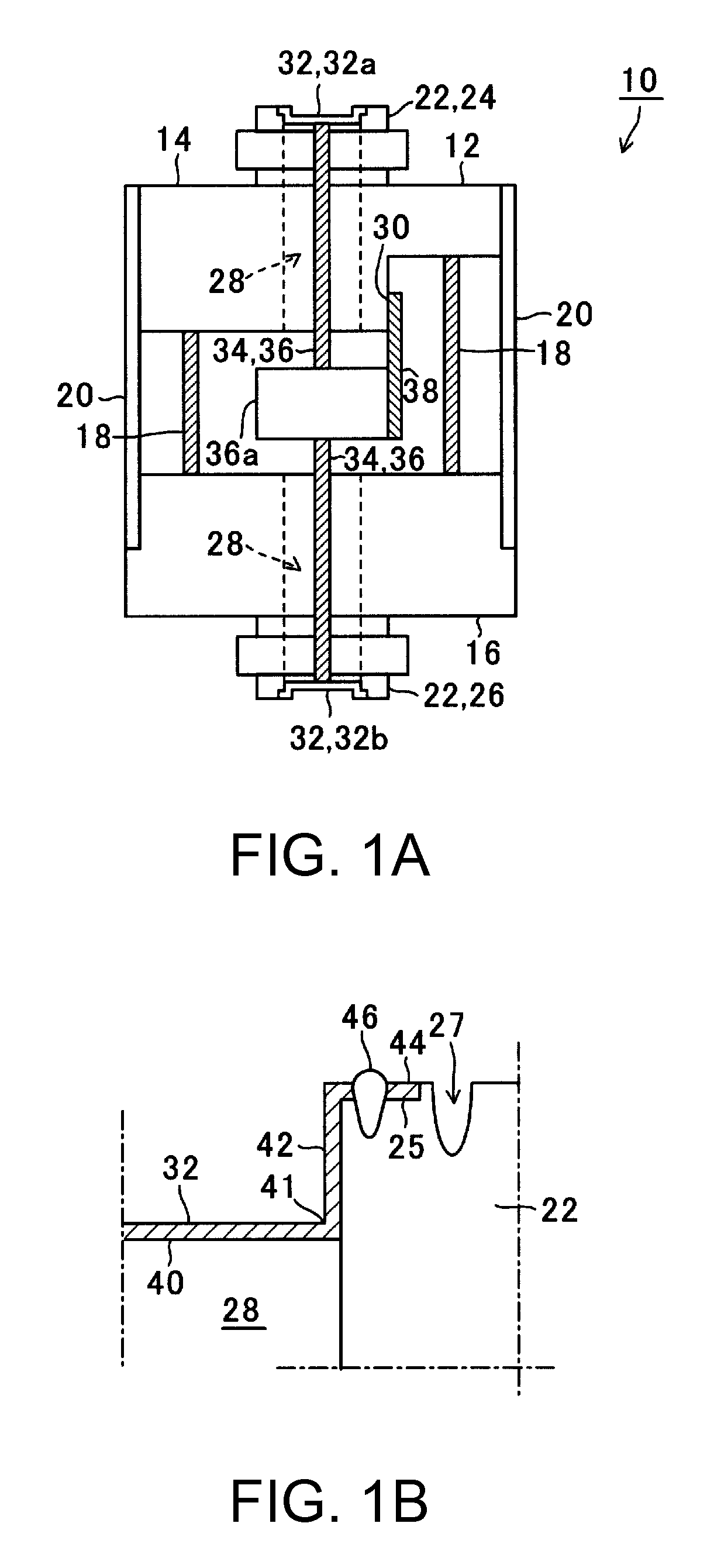Diaphragm for pressure sensor and pressure sensor
a technology for pressure sensors and diaphragms, which is applied in the direction of fluid pressure measurement using piezoelectric devices, fluid pressure measurement using elastically deformable gauges, instruments, etc., can solve the problems of thermal deformation of components, inducing errors in pressure value measurement, and inducing pressure value measurement errors, so as to reduce the risk of brittle fracture, and reduce the risk of aging deterioration
- Summary
- Abstract
- Description
- Claims
- Application Information
AI Technical Summary
Benefits of technology
Problems solved by technology
Method used
Image
Examples
fifth embodiment
[0097]According to this embodiment, in addition to the effects of the pressure sensor of the fifth embodiment described above, the following effects are produced. Specifically, when stress is applied, the stress is concentrated on the step part between the thick portion and a thin portion of the diaphragm body 114. The thick central area 116 is displaced up and down upon receipt of the stress, but since curving deformation of the central area 116 is small, the stress is not concentrated on a portion where the center shaft 36 is joined to the diaphragm 112. Consequently, the center shaft 36 is not affected by an unwanted force in a direction different from the force in the axis direction, and, therefore, pressure detection accuracy is improved.
seventh embodiment
[0098]FIG. 8 illustrates a pressure sensor 120 for relative pressure detection according to a The pressure sensor 120 uses the diaphragm 112 shown in FIG. 7.
[0099]The pressure sensor 120 includes a housing 122 composed of a hollow cylindrical chassis. The housing 122 includes: a hermetic terminal board 124 as a first member (an upper end face plate), a flange end face plate 126 as a second member (a lower end face plate), and a cylinder sidewall 128 as a third member which surrounds the circumference of the end face plates separately disposed, so that the housing 122 has a structure of a hollow airtight container. On each outer surface of the hermetic terminal board 124 and the flange end face plate 126, a first pressure input orifice 130 and a second pressure input orifice 132 communicating with an internal space of the housing are provided as recesses. Through holes 134 (134, 134B) having the same axis as an axis core of the housing 122 are made through bottom plates of the herme...
eighth embodiment
[0107]FIG. 9 is a sectional view of a pressure sensor 160 according to an The example shown in the drawing is an example of a pressure sensor for detecting absolute pressure using the diaphragm 112 shown in FIG. 7.
[0108]The pressure sensor 160 includes a housing 152 composed of a hollow cylindrical chassis. The housing 152 includes: a hermetic terminal board 154 as a first member (an upper end face plate), a flange end face plate 156 as a second member (a lower end face plate) that is the same as that in the seventh embodiment, and a cylinder sidewall 158 as a third member surrounding the circumference of the end face plates that are separately disposed by the cylinder sidewall 158, so that the housing 152 has a structure of a hollow sealed container. In the flange end face plate 156, a pressure input orifice 160 communicating with the inner space is penetrated coaxially with an axis core of the housing 152, thereby forming a recess. Provided in the center of the recess is a throug...
PUM
| Property | Measurement | Unit |
|---|---|---|
| external pressure | aaaaa | aaaaa |
| force | aaaaa | aaaaa |
| pressure | aaaaa | aaaaa |
Abstract
Description
Claims
Application Information
 Login to View More
Login to View More - R&D
- Intellectual Property
- Life Sciences
- Materials
- Tech Scout
- Unparalleled Data Quality
- Higher Quality Content
- 60% Fewer Hallucinations
Browse by: Latest US Patents, China's latest patents, Technical Efficacy Thesaurus, Application Domain, Technology Topic, Popular Technical Reports.
© 2025 PatSnap. All rights reserved.Legal|Privacy policy|Modern Slavery Act Transparency Statement|Sitemap|About US| Contact US: help@patsnap.com



